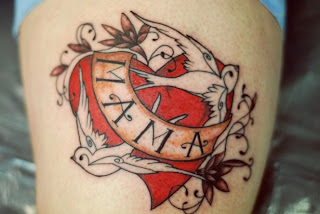Back in March I blogged about
my ten favorite historical romances. This month, as a little change of pace, I’m going to talk about some favorite books that aren’t romance, but might appeal to historical romance readers, especially those who also enjoy long-running series with recurring characters. They all have rich characters and take the reader on a journey to another place and time, so for me they hit almost the same sweet spot as a good historical romance.
1)
The Lord Peter Wimsey mysteries, by Dorothy Sayers. These were contemporary at the time they were written, in the 1920’s and 30’s, but now provide a vivid look at the bygone world of Britain between WWI and WWII. There’s a lovely romance arc in the latter half of the series, and I often recommend romance readers start with
Strong Poison, the book that introduces Lord Peter’s love interest, Harriet Vane, and then proceed to
Have His Carcase, Gaudy Night, and
Busman’s Honeymoon to follow their relationship arc, after which you can go back and read the rest of the series. The writing is lovely, witty, and occasionally thought-provoking, and Lord Peter and his supporting cast are a delight. Peter is one of my main fictional crushes, and I’m fond of Bunter, Miss Climpson, and the Dowager Duchess, among others.
2)
The Marcus Didius Falco mysteries, by Lindsey Davis. Falco is a sleuth in the first century Roman Empire (about half the books take place in Rome and its immediate environs, the rest all around the empire). The history is accurate enough to delight my geeky, pedantic heart, but the tone is modern and slangy--a combination that works wonderfully for making Romans into vibrant, living characters in a diverse and often raucous society rather than the formal figures of swords-and-sandals epics. There’s a lovely romance arc that becomes a family arc as the plebian Falco woos and settles down with the patrician Helena Justina. (I do love a good cross-class romance where it’s the man who marries up.)
3) Jacqueline Carey’s
Kushiel fantasy novels. Set in a recognizable alternative version of our world and wide-ranging in setting--though focused mostly on Terre d’Ange (France) and Alba (Britain)--these are epic fantasies where the fates of nations are at stake. But they also have strong romance arcs and more sex (some of it kinky) than typical for the fantasy genre. Oh, and they’re written in first person, an unusual choice for epic fantasy, but one that works very well, IMO.
As of now there are three trilogies. The first, beginning with
Kushiel’s Dart and featuring courtesan and spy Phedre no Delaunay, is my favorite, but I also wolfed down the Imriel trilogy (first book
Kushiel’s Scion), about Phedre’s foster son, and I’m loving the in-process trilogy set about 100 years later, beginning with
Naamah’s Kiss. (The third and final book,
Naamah’s Blessing, comes out in June, and I’ve already pre-ordered it on my Kindle.)
4) Lois McMaster Bujold’s
Vorkosigan Saga. A science fiction series, this may seem like more of a reach for historical romance fans, but at least for me it satisfies the same need to escape to a world different from my own, one driven by richly developed characters and their relationships. It’s set 1000 years or so in the future, in a world where humans have expanded out from Earth to colonize and terraform multiple planets linked by wormholes. The main planet of the series, Barrayar, went through centuries of isolation after its wormhole collapsed, during which time it went low-tech and feudalistic just to survive. After a new wormhole connection is discovered, the Barrayarans had to modernize in a hurry to avoid conquest by a galactic empire, and the Barrayar of the books is an often-awkward blending of traditional, feudal mores with high-tech, galactic power.
So much for backstory. The series begins with the meeting of Barrayaran Aral Vorkosigan, admiral and aristocrat, and Cordelia Naismith, an astronomical survey captain from a progressive, egalitarian planet. They fall in love despite the trifling obstacle of a war between their home planets, and the first two books,
Shards of Honor and
Barrayar, are about their early relationship and the birth of their son, Miles, the hero of the rest of the series. Miles doesn’t get his own romance arc until
Komarr and
A Civil Campaign, deep in the series, but unlike the Lord Peter books I wouldn’t advise reading the Vorkosigans out of order--the later books build too much on what happens before, and I don’t think the payoff of
A Civil Campaign would be as satisfying if the reader hasn’t built up a relationship with Miles.
What about you? What do you read when you’re not reading romance?
-----
Susanna Fraser writes Regency romance with a focus on the Napoleonic Wars. The Sergeant's Ladyand A Marriage of Inconvenience are available now from Carina Press.





















